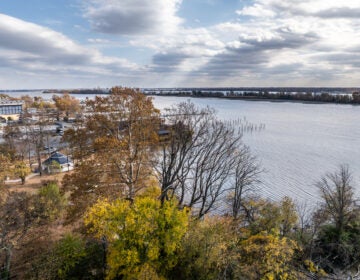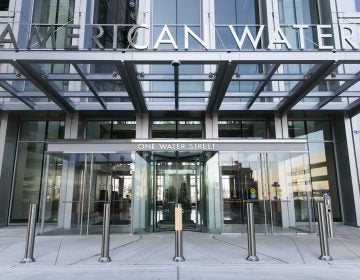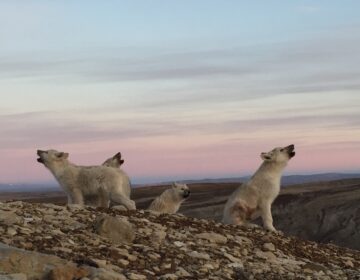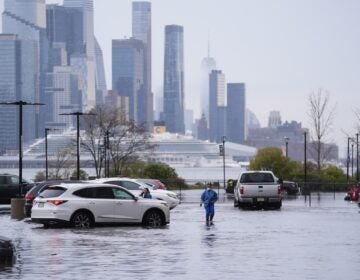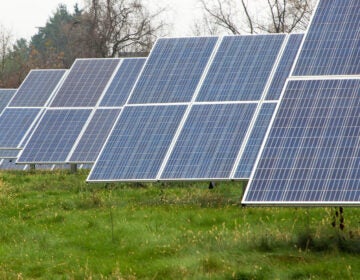What to know about climate change and drought in the Philly region
While climate change did not cause the current drought, scientists say it could be making it worse.
Listen 1:09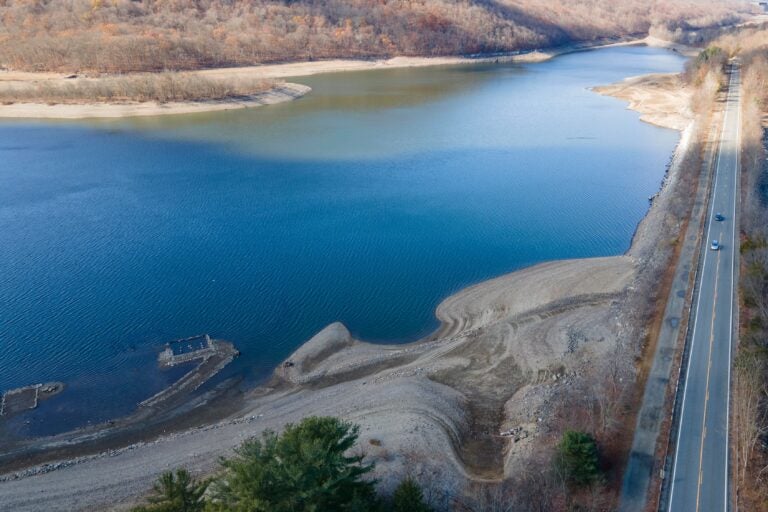
Low water levels at the Wanaque Reservoir in Ringwood, N.J., is shown Monday, Nov. 11, 2024. (AP Photo/Ted Shaffrey)
This story is part of the WHYY News Climate Desk, bringing you news and solutions for our changing region.
From the Poconos to the Jersey Shore to the mouth of the Delaware Bay, what do you want to know about climate change? What would you like us to cover? Get in touch.
Parts of the northeast are experiencing a drought that’s being described as “historic.”
New Jersey ramped up its drought declaration to a warning level Wednesday, as the state faces an unseasonably high number of wildfires as well as dwindling reservoir and groundwater levels. One utility in the state issued a mandatory water conservation order.
Meanwhile, the dry conditions have caused salty water in the Delaware River to creep toward Philadelphia’s main drinking water intake. The city experienced its driest October on record, as did Allentown, Pennsylvania, Trenton and Wilmington, Delaware.
Numerous counties in southwest and southeast Pennsylvania are under drought watches or warnings, while Delaware is under a statewide drought watch.
New Jersey Gov. Phil Murphy called the wildfires and dwindling drinking water supplies a wake-up call.
“The reality is the drought we’re currently experiencing is just one example of how a changing climate is impacting the state today — not just far off into the future but in the here and now,” Murphy said.
So what role is climate change playing in the current drought?
How climate change impacts droughts in the Philly region
Human-caused climate change is making the northeastern United States warmer and wetter. Total annual precipitation in the region is trending up, but that doesn’t mean the region can’t experience droughts.
Dry conditions and moderate droughts are a normal part of the mid-Atlantic’s climate. The Philadelphia region’s “drought of record” happened in the 1960s, and naturally occurring seasonal droughts will continue to occur in the region even if rainfall increases overall, according to the National Integrated Drought Information System.
There’s no indication droughts are occurring more frequently in the Northeast due to climate change, said Arthur DeGaetano, a professor of earth and atmospheric sciences at Cornell University. But climate change can make droughts more severe, because warmer temperatures mean more evaporation.
“The warmer it is, the faster the water leaves the ground,” said Mathew Barlow, a professor of climate science at the University of Massachusetts Lowell. “Things dry out more quickly when it’s warmer, and that’s expected to play more of a factor in drought going forward. That much is clear.”
A recent study found that evaporation played a bigger role than a lack of rain in the severity of the drought in the American West from 2020 to 2022.
“A warmer atmosphere is a thirstier atmosphere,” said Lauren Casey, a meteorologist with the nonprofit research group Climate Central.
Climate change is also thought to make precipitation more variable, Barlow said.
“There’s this kind of counter-intuitive expectation that even as that average [precipitation] goes up, within the year there are going to be these bigger swings month to month,” he said. “You’re putting more water and energy into the system, so it just makes everything bigger — including the swings back and forth.”
Did climate change cause this drought?
The short answer is no. But climate change could be making it worse.
“To say that this drought wouldn’t have occurred without climate change induced by human activities, is absolutely false,” said New Jersey state climatologist David Robinson. “Our day-to-day weather is still going to vary, but it all takes place on a foundation that is raised somewhat by human activities.”
Because of this higher “foundation,” climate change likely is influencing the severity of the current drought, DeGaetano said.
“I definitely think it is playing a role,” he said. “It’s been pretty warm. So the fact that temperatures are warmer increases evaporation.”
Barlow agrees.
“Climate change is definitely playing a role in the [current] drought of making it warmer, which leads to more evaporation, which makes the drought worse,” he said.
Average temperatures so far this fall have been among the warmest on record for several weather stations in the Philadelphia region, with data stretching back at least two decades. Philadelphia’s mean daily high temperatures since the beginning of September have been the warmest since records began in the late 1800s.
Using Climate Central’s rapid attribution tool for temperatures, Casey estimates the high temperatures on more than a dozen days in the Philly region since the start of October were influenced by climate change.
“We’re seeing these … warmer temperatures becoming more likely because of carbon pollution in our atmosphere,” Casey said.
So what is behind the drought?
The dry conditions affecting New Jersey, parts of Pennsylvania and Delaware have been caused by a persistent pattern of high pressure in the atmosphere above the eastern U.S. since early October.
“It can sort of act as a little bit of a force field in blocking or redirecting approaching storm systems that would bring us that much needed rainfall,” Casey said.
The high-pressure system keeps the skies clear, bringing colder nights and hotter days, Robinson said.
“It creates its own dry weather, but it also fends off any wet weather from coming in,” he said.
Zoe Read contributed to this report.

Get daily updates from WHYY News!
WHYY is your source for fact-based, in-depth journalism and information. As a nonprofit organization, we rely on financial support from readers like you. Please give today.



